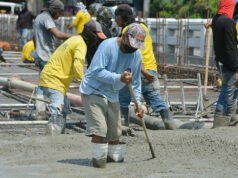Peso weakens as fresh round of US-China tariffs take effect
THE PESO weakened on Monday as the United States and China kicked off a fresh round of tariffs and with the market expecting slower Philippine inflation in August.
The local unit closed at P52.105 against the greenback on Monday, down 5.5 centavos from its P52.05-to-a-dollar close on Friday.
The peso opened sharply weaker at P52.17 versus the dollar. It traded in a tight range, with its weakest point recorded at P52.19, while its intraday best was at P52.08 against the greenback.
Dollars traded on Monday climbed $1.24 billion from the $989.53 million recorded last Friday.
“The peso weakened as the imposition of new US tariffs on Chinese goods took effect yesterday despite the ongoing talks between the US and China, dimming near-term expectations of a bilateral trade agreement,” a trader said via email.
Meanwhile, another trader said the market could be monitoring demand for more dollars by the end of the month.
“If that’s the case, the dollar-peso [exchange] will move once again. We’re looking for fresh leads as to where dollar-peso will go. P52.10 is still a good support for now.”
The United States began imposing 15% tariffs on a variety of Chinese goods on Sunday — including footwear, smart watches and flat-panel televisions — as China began imposing new duties on US crude, the latest escalation in a bruising trade war.
US President Donald Trump said the sides would still meet for talks later this month.
Mr. Trump, writing on Twitter, said his goal was to reduce US reliance on China and he again urged American companies to find alternate suppliers outside China.
A new round of tariffs took effect from 0401 GMT (12:01 a.m. EDT), with Beijing’s levy of 5% on US crude marking the first time the fuel had been targeted since the world’s two largest economies started their trade war more than a year ago.
The Trump administration on Sunday began collecting 15% tariffs on more than $125 billion in Chinese imports, including smart speakers, Bluetooth headphones and clothing.
A variety of studies suggest the tariffs will cost US households up to $1,000 a year and the latest round will hit a significant number of US consumer goods.
In retaliation, China started to impose additional tariffs on some of the US goods on a $75 billion target list. Beijing did not specify the value of the goods that face higher tariffs from Sunday.
The extra tariffs of 5% and 10% were levied on 1,717 items of a total of 5,078 products originating from the United States. Beijing will start collecting additional tariffs on the rest from Dec. 15.
Meanwhile, in an e-mail to reporters last Friday, the Bangko Sentral ng Pilipinas’ Department of Economic Research said it expects inflation in August to settle within the 1.3-2.1% range due to lower fuel, rice, and power prices. This compares to the 2.4% inflation rate logged in July and 6.4% in August last year.
A BusinessWorld poll of 12 economists late last week yielded a median inflation estimate of 1.8% for August.
The Philippine Statistics Authority will release official inflation data on Thursday.
For today, traders said the peso may continue to slip ahead of the release on US manufacturing purchasing managers’ index (PMI) data.
“The local currency might weaken further from safe-haven demand ahead of the US manufacturing PMIs tomorrow following the release of weak Chinese manufacturing reports,” the first trader said on Monday.
The first trader expects the peso to play at around P52.00 to P52.20 against the dollar today, while the second trader sees it moving within the P52.00-P52.30 band. — Luz Wendy T. Noble with Reuters



